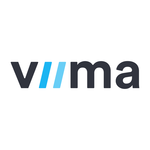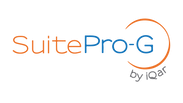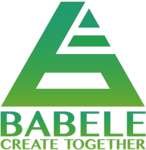Description

iEnabler

Viima
Comprehensive Overview: iEnabler vs Viima
iEnabler and Viima are distinct platforms designed to facilitate innovation management, yet they cater to different aspects and markets.
a) Primary Functions and Target Markets
iEnabler: iEnabler is an innovation management software that assists organizations in managing and executing their innovation strategies. Its primary functions include idea collection, idea evaluation, portfolio management, and project implementation. It is often used by large corporations and government institutions seeking to streamline their innovation processes and improve productivity by aligning initiatives with strategic goals. The tool aids in fostering a collaborative environment where stakeholders can contribute to and engage with new ideas and projects.
Target Markets:
- Large enterprises
- Government institutions
- R&D departments
- Industries focusing on continuous improvement and strategic innovation
Viima: Viima is an idea and innovation management software that provides a platform for managing ideas and innovations from inception to implementation. It primarily focuses on enhancing employee engagement through idea collection, feedback, and prioritization processes. Viima distinguishes itself by offering a highly visual and customizable user interface, which promotes an open innovation culture where everyone can participate.
Target Markets:
- Small to medium-sized enterprises (SMEs)
- Businesses seeking to boost employee engagement
- Companies in various industries looking for flexible and cost-effective innovation solutions
b) Market Share and User Base
Regarding market share and user base, both iEnabler and Viima have found their niches in the innovation management software market but cater to slightly different segments.
-
iEnabler typically has a smaller user base as it targets larger enterprises with complex structures and specific needs, which require tailored solutions. It is more niche-focused and offers comprehensive features. Consequently, it may not have a dominant market share like more generic platforms but maintains a strong presence in specific verticals that require high customization.
-
Viima attracts a broader and more varied user base, particularly appealing to SMEs due to its affordability, ease of use, and flexibility. Viima's market share is more significant among smaller businesses and companies that prioritize high employee engagement in innovation processes. Its intuitive interface and focus on collaborative innovation make it popular in its category.
c) Key Differentiating Factors
iEnabler:
- Customization and Complexity: Offers robust customization capabilities suited for complex organizational needs and various industry requirements.
- Strategic Alignment: Strong focus on aligning innovation initiatives with business strategy and long-term goals.
- Comprehensive Features: Includes advanced portfolio management and resource allocation tools suitable for larger, resource-rich projects.
Viima:
- User-Friendly Interface: Known for a highly visual and intuitive user experience that encourages widespread use and engagement.
- Flexibility and Affordability: Offers cost-effective solutions with flexible features that can be scaled as per the organization's size and needs.
- Focus on Engagement: Prioritizes employee participation and morale through a democratic idea management process.
In summary, while both tools aim to enhance innovation processes, iEnabler is suited for larger, more complex organizations with a strategic focus on innovation; Viima, on the other hand, offers an accessible and engaging platform for businesses prioritizing employee involvement. The choice between them depends on organizational size, budget, and specific innovation management requirements.
Contact Info

Year founded :
Not Available
Not Available
Not Available
Not Available
Not Available

Year founded :
2013
+358 40 8297811
Not Available
Finland
http://www.linkedin.com/company/viima
Feature Similarity Breakdown: iEnabler, Viima
To provide a feature similarity breakdown for iEnabler and Viima, we need to consider their core functionalities, user interfaces, and any distinguishing features. Both platforms are innovation management tools designed to help organizations capture, develop, and implement ideas effectively.
a) Core Features in Common
-
Idea Collection: Both platforms facilitate the gathering of ideas from employees or community members, offering ways to submit and categorize ideas easily.
-
Collaboration Tools: They provide collaboration features to allow multiple users to contribute, comment on, and refine ideas together.
-
Evaluation and Feedback: The tools offer systems for evaluating ideas, including voting, rating, or feedback mechanisms that help prioritize ideas based on set criteria.
-
Workflow Management: Both solutions include workflow capabilities to progress ideas through different stages, from submission to implementation.
-
Reporting and Analytics: They provide analytics to track participation, engagement levels, and the progress of ideas, helping organizations assess the impact and effectiveness of their innovation programs.
-
Customization: Features to tailor the platform to specific organizational needs, including configuring dashboards and managing user permissions, are present in both.
b) User Interface Comparison
-
iEnabler: Known for its straightforward and user-friendly interface, iEnabler emphasizes simplicity and ease of use. The design is often clean, focusing on accessibility with clear navigation and minimalistic design elements.
-
Viima: Viima also offers a visually engaging and intuitive interface, but it tends to focus more on visual representation of the idea management process. Its design often incorporates elements like visual boards and color-coded categories, making it visually appealing and intuitive for tracking idea progression.
While both emphasize user-friendly interfaces, Viima may stand out for organizations that prefer visual management styles, whereas iEnabler might be advantageous for those prioritizing straightforward functionality.
c) Unique Features
-
iEnabler:
- Integration Capabilities: iEnabler may offer unique integration options with other enterprise systems, such as ERP or CRM platforms, providing a more seamless experience for businesses dependent on these systems.
- Robust Security Features: It may place a significant emphasis on security features, which can be crucial for enterprises with strict data protection requirements.
-
Viima:
- Gamification Elements: Viima incorporates gamification features to boost engagement, encouraging user participation through points, badges, or leaderboards.
- Visual Management and Customization: It provides extensive options for visual management of the idea process, allowing users to customize how they view and interact with ideas.
In summary, while iEnabler and Viima share many common features essential for innovation management, differences in UI design philosophy and unique features like Viima's gamification and visual tools versus iEnabler's integration strengths set them apart. These distinctions can guide organizations in choosing the platform that best fits their culture and operational needs.
Features

Not Available

Not Available
Best Fit Use Cases: iEnabler, Viima
iEnabler and Viima are both tools designed to support innovation, idea management, and collaboration within organizations. They cater to different types and sizes of businesses, each with its unique features and strengths.
iEnabler
a) Best Fit for iEnabler:
-
Large Enterprises and Corporations:
- iEnabler is well-suited for large businesses that have complex structures and require a robust platform to manage innovation and ideation across various departments and geographies.
- Its features are designed to handle a high volume of ideas and inputs, making it ideal for corporations that aim to foster a culture of innovation at scale.
-
Formal Innovation Programs:
- Companies with structured innovation programs, such as corporate innovation labs or R&D projects, can benefit from iEnabler’s comprehensive suite of tools designed for managing and evaluating ideas systematically.
-
Project Management and Strategic Alignments:
- Organizations seeking to align innovation initiatives with strategic goals will find iEnabler’s capabilities in tracking and evaluating ideas particularly beneficial, ensuring that innovation aligns with business objectives.
Viima
b) Best Fit for Viima:
-
SMEs (Small and Medium Enterprises):
- Viima is typically more agile and easier to implement, making it ideal for SMEs that need a flexible yet powerful tool to manage innovation without the complexities that larger tools might entail.
- Its cost-effectiveness and user-friendly interface make it accessible for businesses with limited resources for innovation management.
-
Cross-Functional Teams Collaboration:
- In scenarios where cross-functional collaboration is key, Viima excels with its intuitive design that encourages user engagement and idea sharing.
-
Early Stage and Rapid Growth Companies:
- Startups and companies in the early phases of growth that wish to create a dynamic culture of innovation can leverage Viima’s easy setup and interactive features to gather insights from employees and stakeholders rapidly.
d) Catering to Different Industry Verticals and Company Sizes:
-
iEnabler:
- Industries: Suited for industries with stringent innovation requirements like pharmaceuticals, manufacturing, automotive, and finance, where the structure and analytics of the innovation process are crucial.
- Company Sizes: Best for medium to large enterprises with dedicated teams and resources for innovation management, demanding scalability and integration with other enterprise systems.
-
Viima:
- Industries: Fits a wide range of industries, especially technology, education, and creative sectors, where flexibility and fast-paced ideation are important.
- Company Sizes: Ideal for small to medium-sized businesses and even departments within larger organizations that require a more grassroots, decentralized approach to idea management and collaboration.
In summary, iEnabler is geared towards larger, more structured environments that need comprehensive oversight of innovation processes, whereas Viima is optimized for smaller, agile companies and teams looking to foster a collaborative culture of innovation. The choice between the two would depend on the organization's size, industry, and specific requirements for managing innovation and collaboration.
Pricing

Pricing Not Available

Pricing Not Available
Metrics History
Metrics History
Comparing undefined across companies
Conclusion & Final Verdict: iEnabler vs Viima
To provide a conclusion and final verdict for iEnabler and Viima, I will consider the overall value, pros and cons of each product, and offer specific recommendations for users deciding between them.
a) Best Overall Value
When evaluating the overall value of iEnabler and Viima, it's crucial to consider factors such as usability, features, customer support, pricing, and scalability. Viima often stands out for its intuitive user interface and impressive suite of features designed for innovation management. It provides excellent value for teams focusing extensively on idea collection, collaboration, and innovation processes. iEnabler, on the other hand, might appeal more to organizations looking for a robust platform with a broader focus on performance management and organizational efficiency.
Between the two, Viima offers the best overall value for organizations primarily seeking to enhance their innovation management processes due to its specialized features in this domain.
b) Pros and Cons
Viima
Pros:
- User-Friendly Interface: Viima is known for its intuitive and visually appealing platform that encourages engagement.
- Innovation-Centric Features: Tailored specifically for idea and innovation management, allowing companies to harness creativity effectively.
- Customization Options: Provides flexibility to adapt the platform to the specific needs of different organizations.
- Strong Community Support: Active community and regular updates ensure continuous improvement and support.
Cons:
- Limited Scope: Primarily focused on innovation, which might not meet broader organizational needs outside this domain.
- Scaling Concerns: May require additional tools or integration for large-scale enterprise operations.
iEnabler
Pros:
- Comprehensive Management Tools: Offers a suite of tools for performance and strategic management, suitable for organizations focusing on holistic performance.
- Broad Use Cases: Can be used across various departments and organizational levels for diverse management needs.
- Integrative Capabilities: Capable of integrating with other software, providing versatility in data management and process automation.
Cons:
- Steeper Learning Curve: Users might face a longer onboarding process due to the platform’s complexity compared to Viima.
- Higher Costs: Potentially higher costs due to the extensive range of features if full functionality is required.
c) Recommendations for Users
When deciding between iEnabler and Viima, users should consider the following recommendations:
-
Identify Primary Needs: If your main objective is to boost innovation and idea flow within the organization, Viima is recommended. Its focused platform ensures streamlined processes in these areas.
-
Evaluate Organizational Scale: For organizations with broader performance management needs, consider iEnabler. It is better suited for enterprises seeking extensive management solutions beyond innovation.
-
Consider User Community and Support: Viima’s active community and user support might offer advantages for quickly adapting and optimizing innovation processes.
-
Budget and Resources: Consider your budget and resources allocated for software training and integration. iEnabler might incur higher initial costs and demand more substantial training compared to Viima.
In conclusion, choosing between iEnabler and Viima depends heavily on the specific needs of the organization. Viima offers superior value for innovation-driven goals, while iEnabler provides a broader platform suitable for comprehensive management strategies.
Add to compare
Add similar companies



